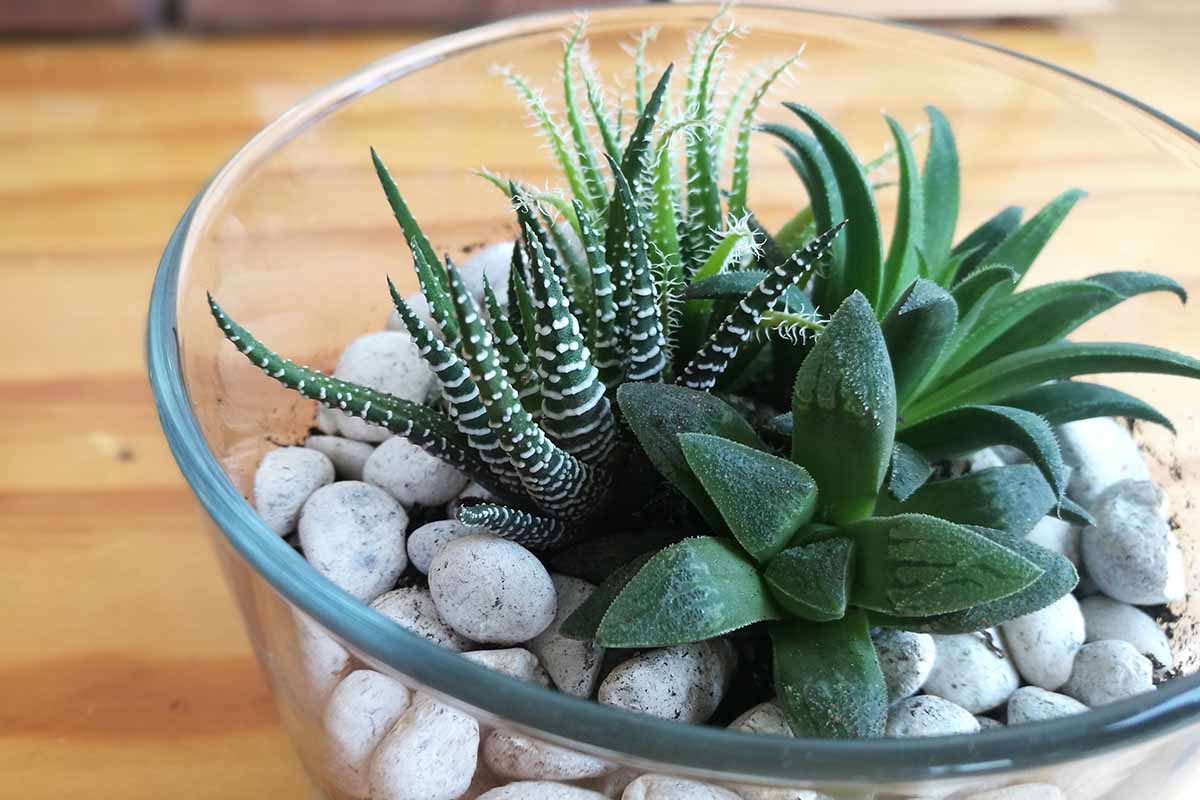
Haworthia is a fascinating genus of succulent plants that never fails to captivate plant enthusiasts with its unique and remarkable qualities. With over 150 recognized species, Haworthia plants come in a wide variety of shapes, sizes, and colors, making them a versatile choice for both indoor and outdoor gardens.
In this article, we will explore 16 astonishing facts about Haworthia that will surely pique your interest and deepen your knowledge about these captivating plants. From their original habitat to their surprising adaptive features, Haworthia plants have a fascinating story to tell. So, buckle up and get ready to delve into the intriguing world of Haworthia!
Key Takeaways:
- Haworthia plants are small, low-maintenance succulents that can thrive indoors. Their zebra-like leaves and air-purifying abilities make them a perfect addition to any space, bringing beauty and clean air.
- With over 70 unique species, Haworthia plants have fascinating features, such as water storage in their leaves and long lifespan. They are safe for pets and have been used in traditional medicine for healing purposes.
Haworthia is a genus of small succulent plants.
Haworthia belongs to the Asphodelaceae family and is native to Southern Africa. These plants are known for their rosette-shaped leaves and often have unique patterns and markings.
There are over 70 recognized species of Haworthia.
Each species of Haworthia has its own distinct characteristics, such as leaf shape, color, and size. Some popular species include Haworthia fasciata, Haworthia cooperi, and Haworthia attenuata.
Haworthia plants are well-suited for indoor cultivation.
Due to their small size and low maintenance requirements, Haworthia plants are a popular choice for indoor gardening. They can thrive in a variety of light conditions and are relatively forgiving when it comes to watering.
Haworthia plants are often called “Zebra Haworthia” or “Zebra Plant” due to their striped leaves.
The markings on Haworthia leaves resemble zebra stripes, hence the common names associated with this plant. The stripes can vary in color, ranging from white to green to brown.
Haworthia plants are great air purifiers.
Like many other succulent plants, Haworthia plants have the ability to improve air quality by removing toxins and releasing oxygen. This makes them a beneficial addition to any indoor space.
Haworthia plants reproduce through offsets.
Haworthia plants produce small offsets, also known as “pups,” around the base of the mother plant. These pups can be separated and planted to grow new individual plants.
Haworthia plants have a unique way of storing water.
One of the fascinating features of Haworthia plants is their ability to store water in their leaves. This adaptation allows them to survive in arid conditions and makes them drought-tolerant.
Haworthia plants prefer bright but indirect sunlight.
While they can tolerate some direct sunlight, Haworthia plants thrive in bright, indirect light conditions. Placing them near a window or in a well-lit room is perfect for their growth.
Haworthia plants have unique flowers.
Although they are primarily grown for their attractive foliage, Haworthia plants also produce small flowers on long stalks. The flowers vary in color, from white to pink to green.
Haworthia plants require well-draining soil.
These succulents prefer soil that allows excess water to drain quickly. A mix of peat moss, perlite, and sand is often recommended for proper drainage and to prevent root rot.
Haworthia plants are low-maintenance.
Taking care of Haworthia plants is relatively easy. They require minimal watering, especially during the dormant period, and can go for extended periods without being watered.
Haworthia plants are popular as desk plants or small decorative pieces.
Due to their compact size and visually appealing leaves, Haworthia plants are commonly used as desk plants or arranged in small decorative pots. They add a touch of greenery and beauty to any space.
Haworthia plants can be propagated from leaf cuttings.
Aside from offsets, Haworthia plants can also be propagated from individual leaves. Simply remove a healthy leaf from the plant, let it callus for a few days, and then place it in well-draining soil to root.
Haworthia plants have a long lifespan.
With proper care, Haworthia plants can live for many years, sometimes even decades. Their longevity makes them a great addition to any plant collection.
Haworthia plants are non-toxic to pets.
Good news for pet owners! Haworthia plants are generally safe for cats, dogs, and other pets. However, it’s always best to monitor their interactions with any plant.
Haworthia plants have been used in traditional medicine.
In certain cultures, Haworthia plants have been used for their medicinal properties. They were believed to have healing effects on burns, wounds, and digestive issues.
Conclusion
Haworthia plants are truly remarkable succulents with their unique features, low maintenance requirements, and striking appearances. Whether you are a beginner gardener or a seasoned plant enthusiast, adding a Haworthia plant to your collection will surely bring joy and beauty to your space.
Conclusion
Haworthia is a fascinating genus of succulent plants that offers a wide range of variety and beauty. Whether you are a seasoned plant enthusiast or just starting your journey into the world of plants, Haworthia is sure to captivate your attention.
From their unique star-shaped rosettes to their ability to thrive in both indoor and outdoor environments, Haworthia plants are a great addition to any collection. With their low maintenance requirements and stunning appearance, they are perfect for anyone looking to add a touch of natural beauty to their home or garden.
So, whether you are fascinated by their ability to store water in their leaves or simply intrigued by their diverse species, exploring the astonishing facts about Haworthia is sure to deepen your appreciation for these incredible plants.
FAQs
1. Are Haworthia plants easy to care for?
Yes, Haworthia plants are generally low maintenance and easy to care for. They require well-draining soil, moderate sunlight, and minimal watering.
2. Do Haworthia plants grow well indoors?
Yes, Haworthia plants are well-suited for indoor environments. They thrive in bright, indirect light and prefer temperatures between 65-80°F (18-27°C).
3. How often should I water my Haworthia plant?
Haworthia plants have a high tolerance for drought and prefer to dry out between waterings. Water them thoroughly when the soil is dry, but be careful not to overwater as it can lead to root rot.
4. Can I propagate Haworthia plants?
Yes, Haworthia plants can be easily propagated through offsets or leaf cuttings. Simply remove the offset or leaf and plant it in well-draining soil to encourage root growth.
5. Is Haworthia toxic to pets?
Haworthia plants are generally non-toxic to pets, but it’s always best to keep them out of reach to prevent any accidental ingestion.
If you found these Haworthia facts captivating, wait until you learn about Zebra Cactus! Zebra Cactus, despite its name, isn't actually a cactus at all. This succulent plant boasts striking striped leaves that resemble zebra stripes, making it a popular choice for home decor. Discover the unique characteristics and care requirements of Zebra Cactus in our next article. From its slow growth rate to its ability to thrive in low-light conditions, Zebra Cactus is sure to impress. Don't miss out on these fascinating insights into one of nature's most beautiful and intriguing plants!
Was this page helpful?
Our commitment to delivering trustworthy and engaging content is at the heart of what we do. Each fact on our site is contributed by real users like you, bringing a wealth of diverse insights and information. To ensure the highest standards of accuracy and reliability, our dedicated editors meticulously review each submission. This process guarantees that the facts we share are not only fascinating but also credible. Trust in our commitment to quality and authenticity as you explore and learn with us.


